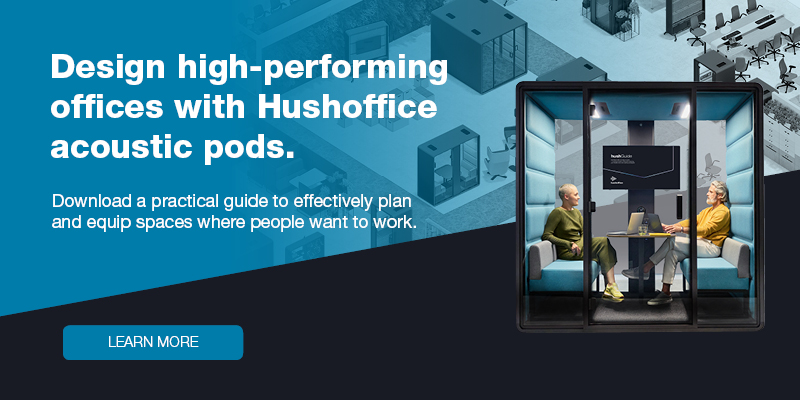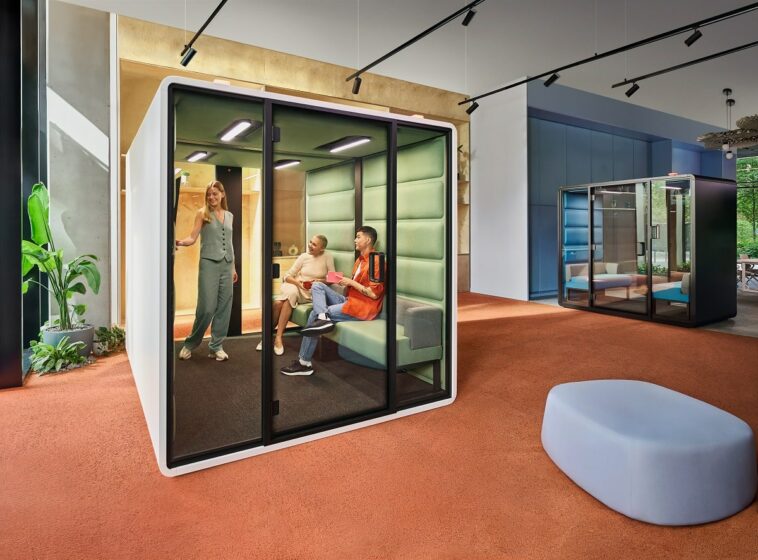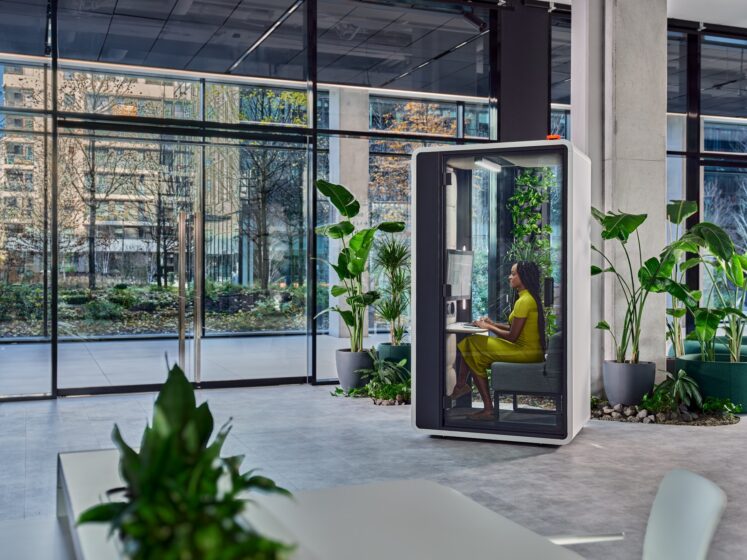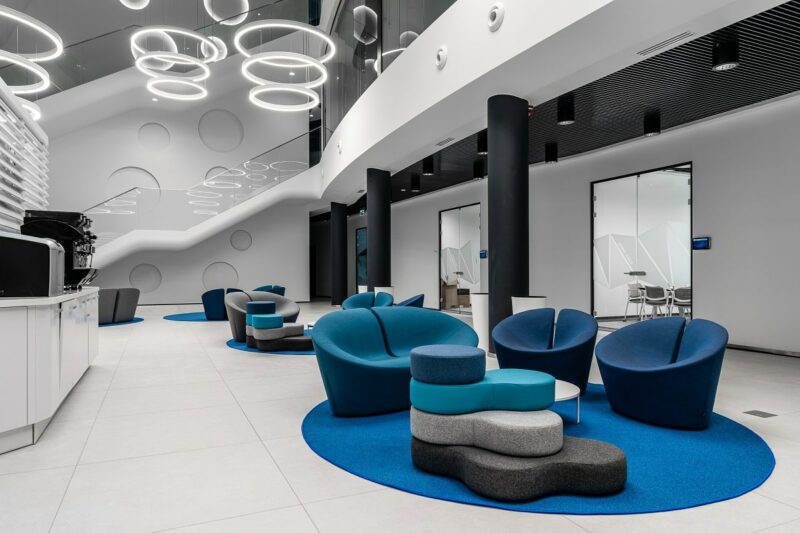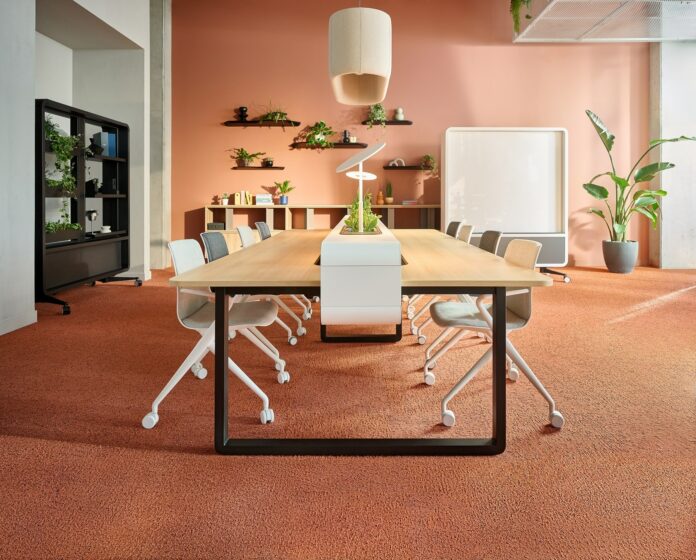Teamwork drives the hybrid work
- Posted on: 21 July 2022
- By: Hushoffice Team
New Future of Work Report by Microsoft contains a summary of the latest findings on the realm of hybrid work. A treasure chest of knowledge, indeed, with its Team Collaboration section offering 30 pages of fact-based guidance regarding distributed team management.
New Future of Work Report by Microsoft contains a summary of the latest findings on the realm of hybrid work. A treasure chest of knowledge, indeed, with its Team Collaboration section offering 30 pages of fact-based guidance regarding distributed team management.
Key calls-to-action from Microsoft’s New Future of Work Report 2022 regarding teamwork
Designate 2-3 meeting-free days a week.
When you do have meetings, adapt the format to match your meeting goals.
Solve the “leaf blower problem” by providing your teams with private, hushed spaces on-site for calls.
Adapt social spaces within the office to foster relationship building.
1. Designate 2-3 meeting-free days a week
The report highlights a number of benefits from implementing meeting-free days into employee work routines. The optimum number is three meeting-free days, resulting in 83% increase in autonomy, 73% in efficiency, 65% in overall satisfaction, 61% in communication, and 41% in engagement.
Surprisingly, 3 meeting-free days per week may also reduce stress levels by approximately 57% and decrease micromanaging by around 68%.
These are the conclusions from the 2022 survey included in the above-mentioned report. Microsoft’s research on the topic revealed similar results: 73% of respondents reported that meeting-free Fridays positively impacted their well-being, and 77% stated that it allowed them to devote more time to concentrative work.
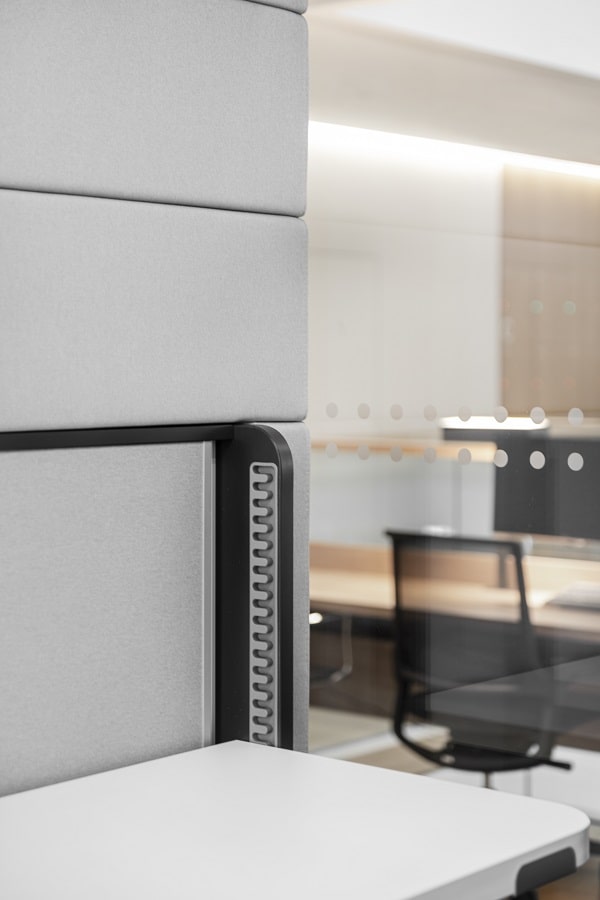
Of course, with fewer meetings, they must be effective and to-the-point.
A clear agenda. A democratic process of decision-making. A high-quality meeting space (such as the mobile 2-person hushMeet.S pod). The building blocks of a smooth meeting flow include full focus, the right approach, and a welcoming atmosphere. Take a look at our list of 16 tips for effective hybrid meetings.

The most reliable statistics on the advantages of meeting-free days are connected with productivity and stress levels. Establishing three meeting-free days a week can raise productivity by a remarkable 73% while reducing stress levels by an impressive 57%. These are amazing results! However, the fewer meeting days at our disposal, the more efficient they must be. That is why high-quality meeting spaces are a must, providing essential support for successful discussions. Consider solutions ensuring impeccable acoustics, such as the 4-person hushMeet team pod or the hushMeet.L modular pod accommodating up to 8 people, equipped with power, customisable lighting and ventilation, and comfortable furnishings
– says Mateusz Barczyk, Senior Brand Manager, Hushoffice.
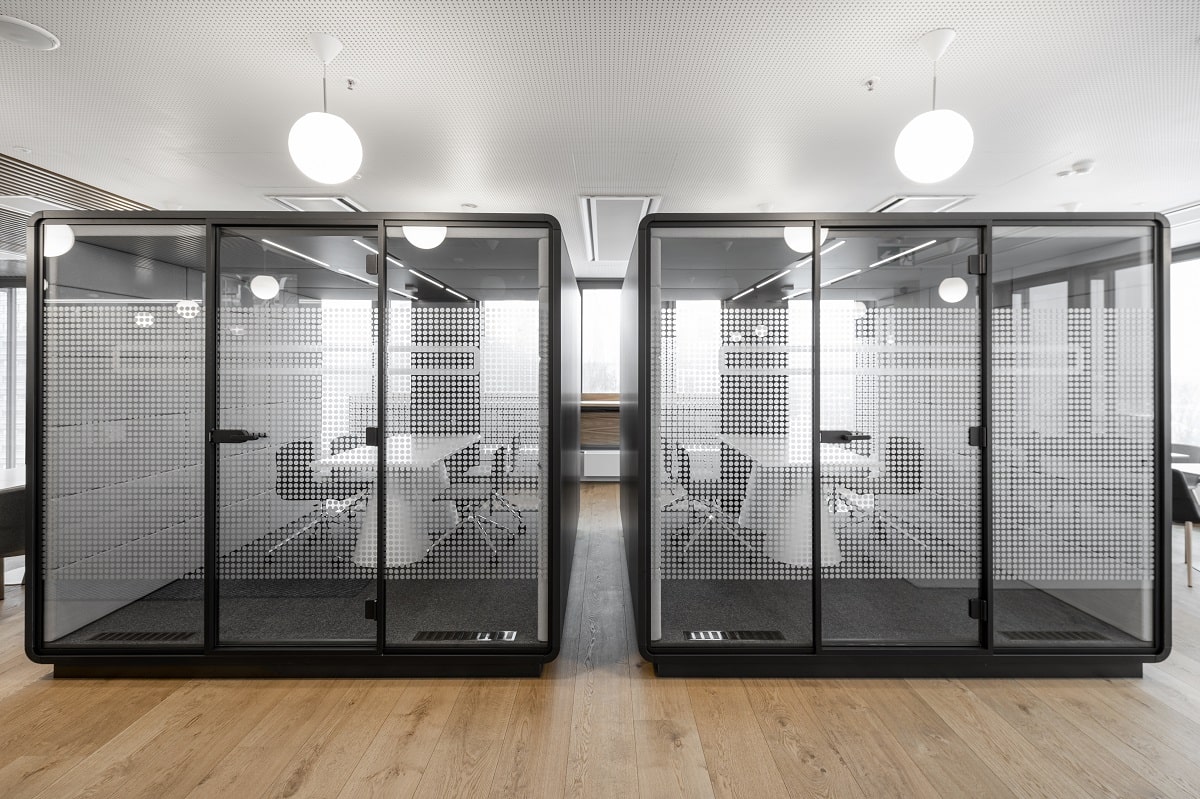
2. When you do have meetings, adapt the format to match your meeting goals
Microsoft’s report highlights the necessity of adapting the meeting format with consideration to minimise video-conferencing fatigue.
To find out whether you should connect via phone, video, or in-office, study the graph on page 32 of the report.
In general, voice and screen-sharing are essential for all meeting types. When it comes to video, it is crucial for meetings aimed at conflict-resolution and trust-building as it allows participants to communicate via gestures and expressions. Therefore, the hybrid office needs to provide high-quality video call spaces.

Video conferencing is generally more inclusive than phone calls.
Especially for participants who are deaf or hard of hearing, video conferencing enables lip-reading. Thus top-notch video call pods, such as hushHybrid, support neurodiversity and constitute an integral part of an inclusive workplace.
Keep video-call fatigue at bay by attracting your employees back to the office.
Introduce hybrid essentials into your workspace, including space dividers and meeting pods and booths. This transformation will turn your workspace into a fully functional working environment that attracts people back to the office. Consequently, team members will have more opportunities to meet face-to-face, achieving a healthy balance between online and real-life interactions.
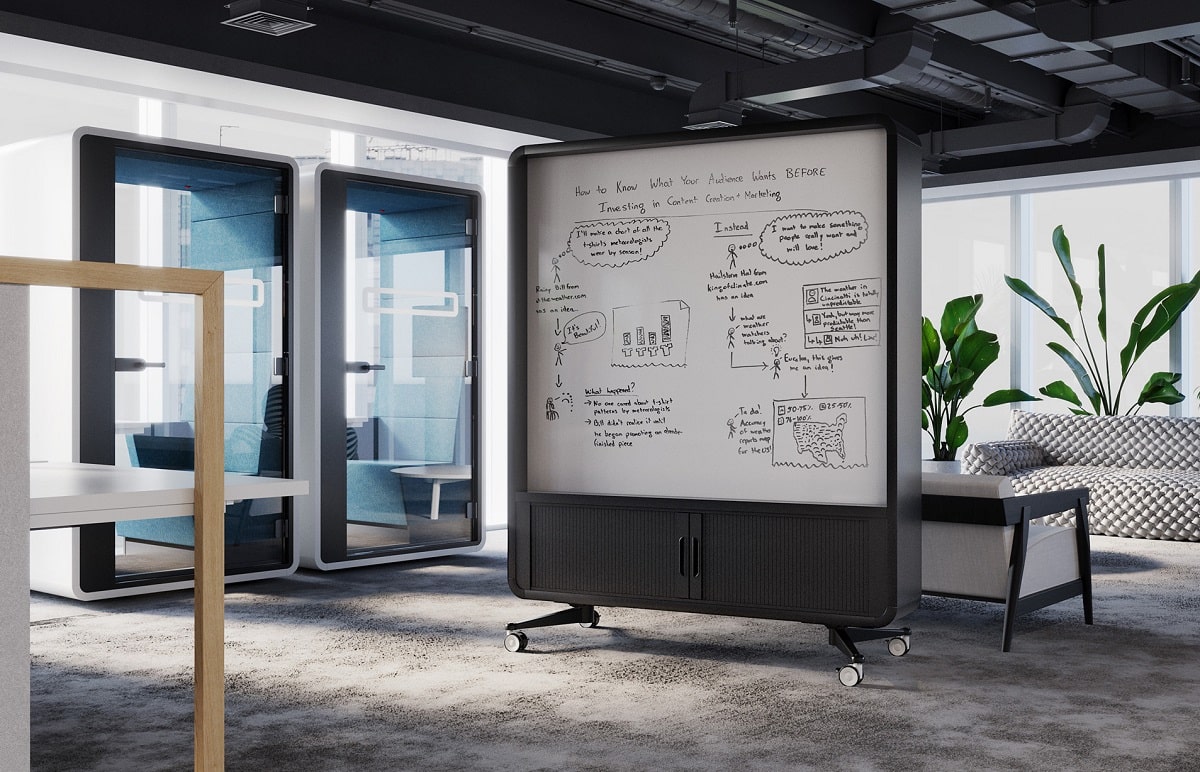
3. Solve the “leaf blower problem” by providing your teams with private, hushed spaces on-site for calls
The term “leaf blower problem” has been coined by Microsoft to describe a novel issue characteristic of video calls.
How can the “leaf blowing problem” be defined?
Imagine Brad on a call in the office. He’s constantly distracted by John, a colleague discussing a problem aloud nearby. Remote participants on Brad’s call are unaware that John’s conversation is the true source of Brad’s focus issues. Consequently, they may attribute his distraction to a lack of interest, or even consider him rude.
The “leaf blower problem” concerns acoustic and visual distractions and their function in the office environment.
Microsoft coined it the “leaf blower problem” as the scenario happened in the home-office environment where, say, Brad was distracted by a leaf blower rumbling outside his flat. Other call participants didn’t get the whole picture, but could only notice Brad’s evident preoccupation with something else.
We cannot afford the expense of the “leaf blower problem” occurring in the office.
Employees require access to a variety of comfortable and quiet meeting spaces within the office; otherwise, they may be distracted during calls. This distraction can lead to missing key information and giving the impression of being uncommitted and uninterested. Consequently, it may result in losing opportunities and business partners.
Privacy pods are an ideal solution – they minimise interruptions and cocoon you in a quiet sanctuary for focused work.
Pods can solve the focus issues typical of open-plan offices by blocking out distractions of all kinds. Actually, even the brightest minds are distracted by open-office commotion. When concentration is disrupted, individuals often react with irritation, as statistically, it takes around 23 minutes to regain focus on a task. That’s why pods are an effective solution.
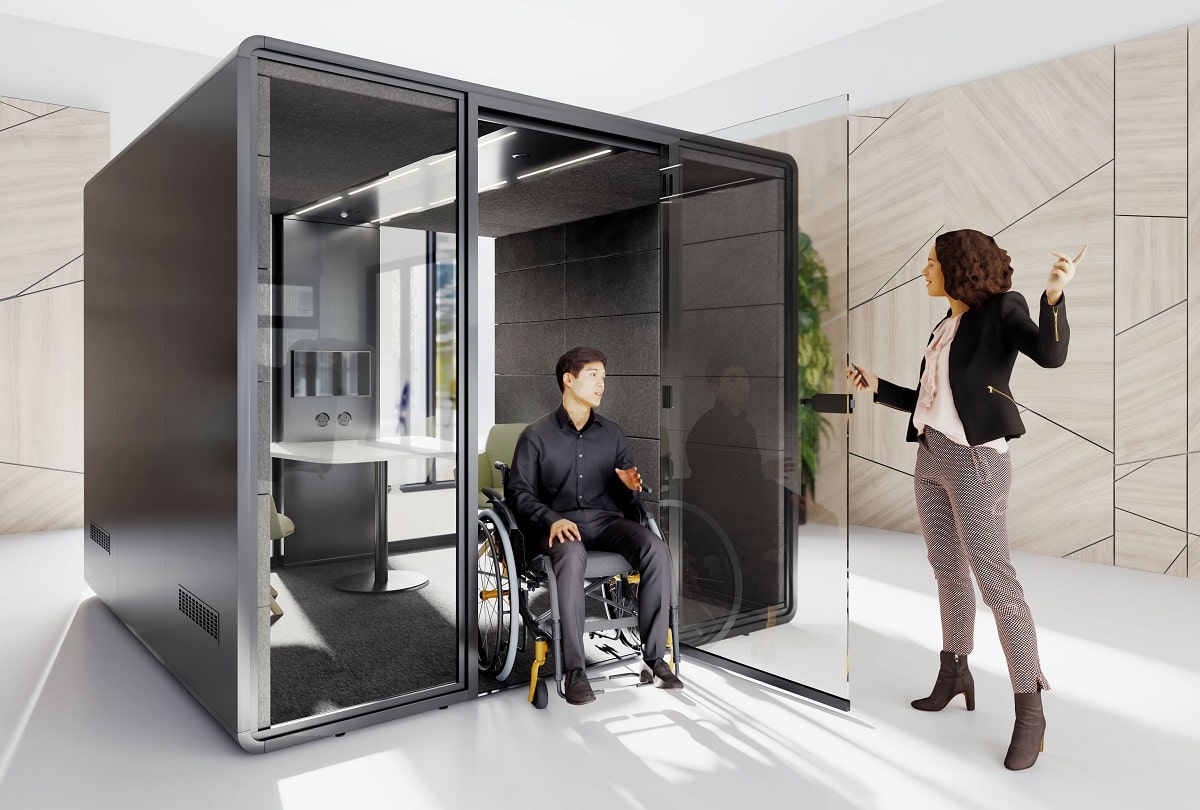
4. Adapt social spaces within the office to foster relationship building
Microsoft’s report is replete with data demonstrating that social interactions foster trust-building and knowledge-sharing. Informally connecting, like checking in with a colleague around noon, or talking through new takeaway options over lunch are simple activities that connect people and strengthen partnerships.
How to lay the groundwork for socialisation? Enhance your key social spaces within the office.
The quiet break room (such as hushMeet.L). Bustling cafes. Lively lounges with their semi-sound-insulated booths. The mobile hushWall meeting hub. Add a touch of emotion to any space where people meet to create an atmosphere of welcoming camaraderie and comfortable togetherness.
Encourage team members to come up with their own social routines.
Whether it’s a morning coffee break, a weekly celebration of significant milestones, or a monthly observance of a colleague’s exceptional work, maintaining these routine rituals fosters regular bonding and serves as a cornerstone of a healthy culture.

Regular socialisation enhances hybrid working by adding the necessary human touch that the virtual world lacks. The more often we connect with others, the closer bonds we establish with our peers and supervisors, fostering a more relaxed atmosphere. As a result, we feel comfortable sharing unconventional, novel ideas that are at the core of innovation. We can also open up about work stress, thereby relieving tension. Private conversations allow worries to be openly addressed, facilitating effective problem-solving. In summary, providing welcoming and functional social spaces offers numerous benefits to team members
– says Mateusz Barczyk, Senior Brand Manager, Hushoffice.
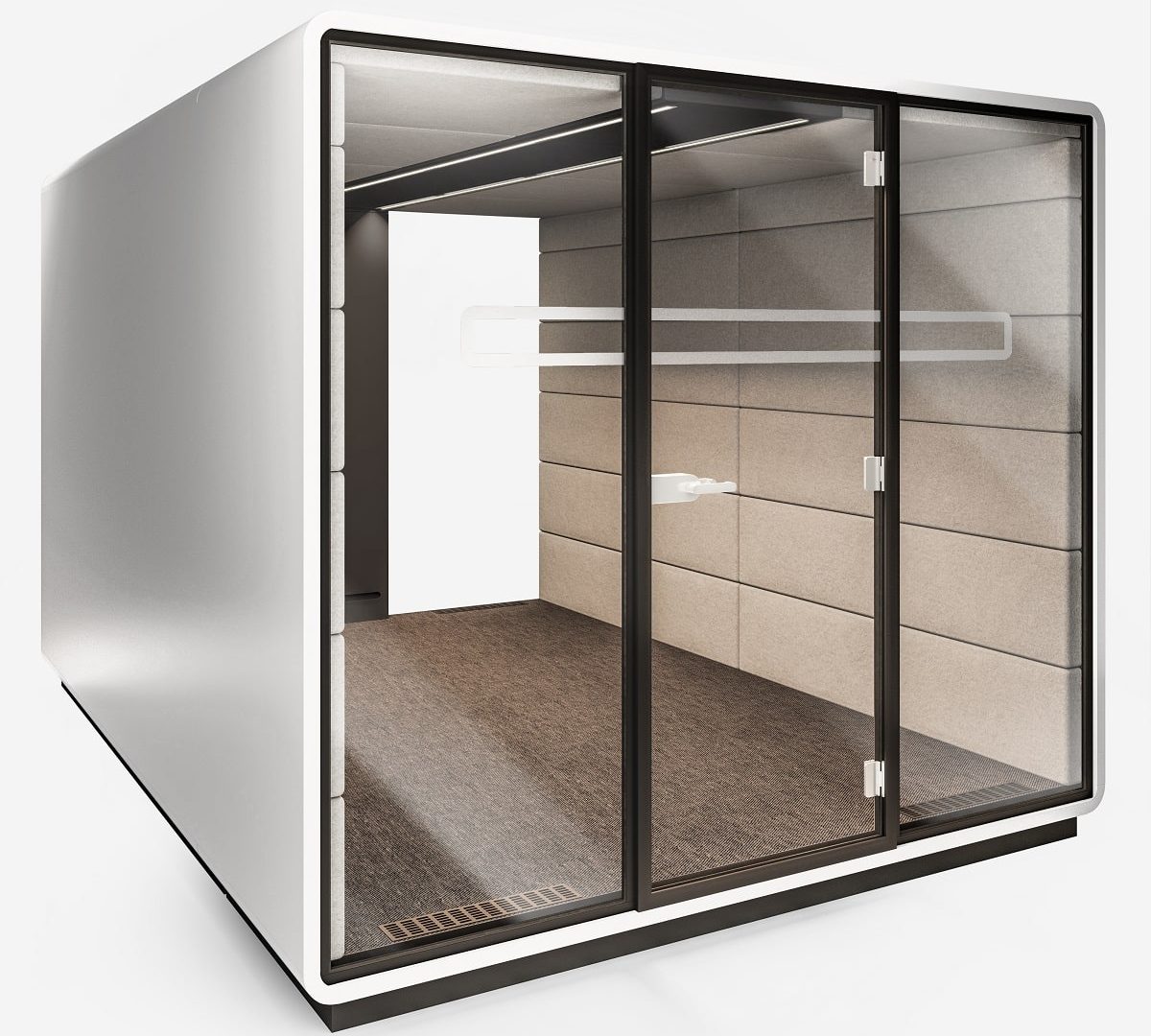
Pods serve as ideal social spaces, especially for neurodiverse and introverted individuals.
In fact, “isolation” pods can transform the office into a more, not less, social workspace. If your new interns find it challenging to make out speech in a noisy workspace, they will be delighted to hold smooth team discussions in a noise-dampening pod such as hushMeet. If your marketing lead with ADHD requires focus time, they can simply step into hushMeet – its frosted rear panel serves as a blinder, ensuring full concentration on the task.
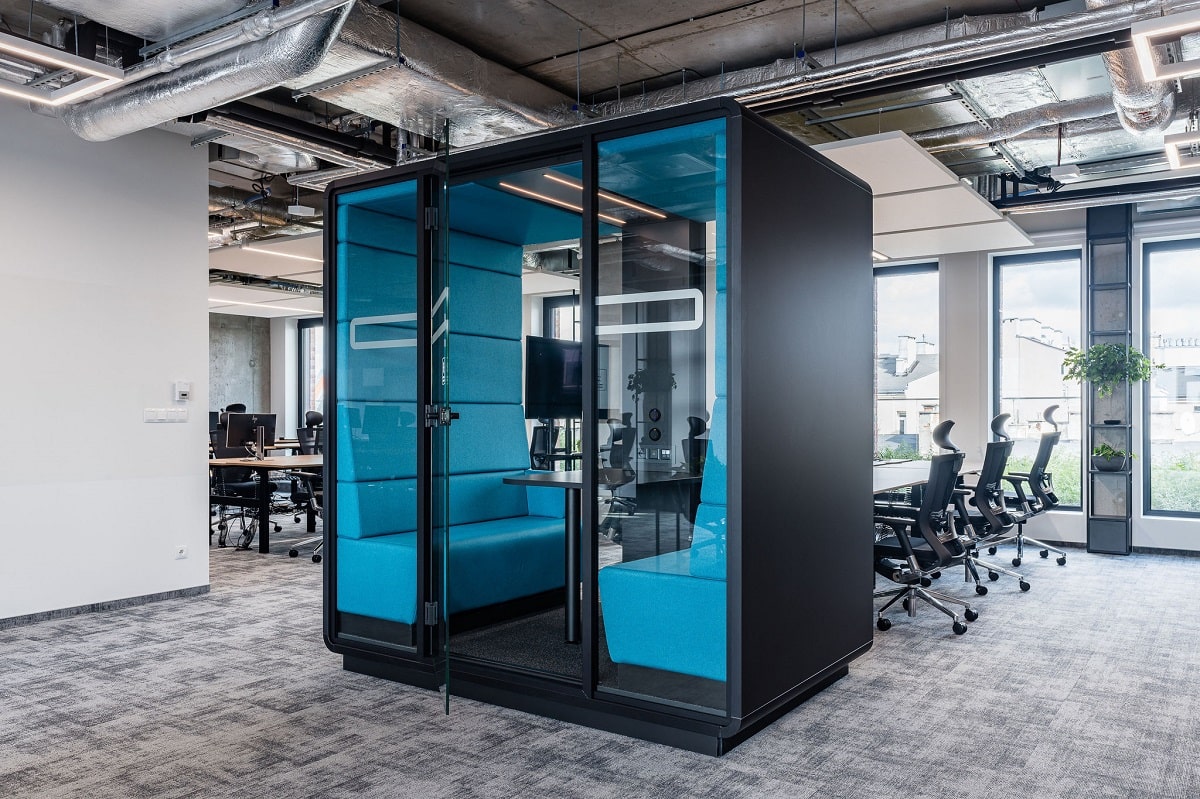
Pods are an outstanding solution for sensory-sensitive individuals who favour quiet and peaceful working environments. As a fully mobile option, they allow employees to adjust the office layout to their needs and preferences. Both the hushHybrid video conference booth and hushPhone call booth can be seamlessly relocated with a push. Other pods from the Hushoffice collection can be relocated using a pallet truck. To sum up, pods offer a dual benefit: they provide employees with necessary peace and quiet while enhancing flexibility in the layout
– says Mateusz Barczyk, Senior Brand Manager, Hushoffice.
What are your thoughts on the topic? Have you ever considered implementing meeting-free days in your company? How do you decide whether meetings should be conducted by video, phone, or face-to-face? Are there any complaints about video-conferencing fatigue or distractions during calls in your office? And most importantly: have you considered Hushoffice pods yet? For further information, feel free to leave us a message.
Key calls-to-action from Microsoft’s New Future of Work Report 2022 regarding teamwork
Designate 2-3 meeting-free days a week.
When you do have meetings, adapt the format to match your meeting goals.
Solve the “leaf blower problem” by providing your teams with private, hushed spaces on-site for calls.
Adapt social spaces within the office to foster relationship building.
Hybrid teamwork – frequently asked questions
What does hybrid collaboration look like?
Hybrid collaboration describes employees working together on tasks from various locations: one from the physical office, another from home, and yet another enjoying the bustling atmosphere of a cafe. Acoustic office pods, such as hushMeet, enhance hybrid collaboration by protecting in-office workers from the open-floor distractions and ensuring a private and comfortable working environment.
How can you effectively collaborate in hybrid environments?
Firstly, designate 2-3 meeting-free days a week, simultaneously making each meeting valuable and to-the-point. Make sure that you adapt the appropriate meeting format (video, audio, or face-to-face) to meet your goals. In this way you can keep video-conferencing fatigue at bay, providing the necessary balance. Also, provide your employees with peaceful, private spaces in the office to facilitate effective collaboration both in person (using a multi-person pod, such as hushMeet.L) and online (using a one-person pod, such as hushHybrid). Finally, adapt social spaces within the office to foster relationship building as strong relationships are the cornerstone of effective collaboration.
How can office pods facilitate effective collaboration?
Pods contain noise, allowing team members to get enthusiastic during discussions without distracting their peers on the floor. As a result, collaboration can flourish.

